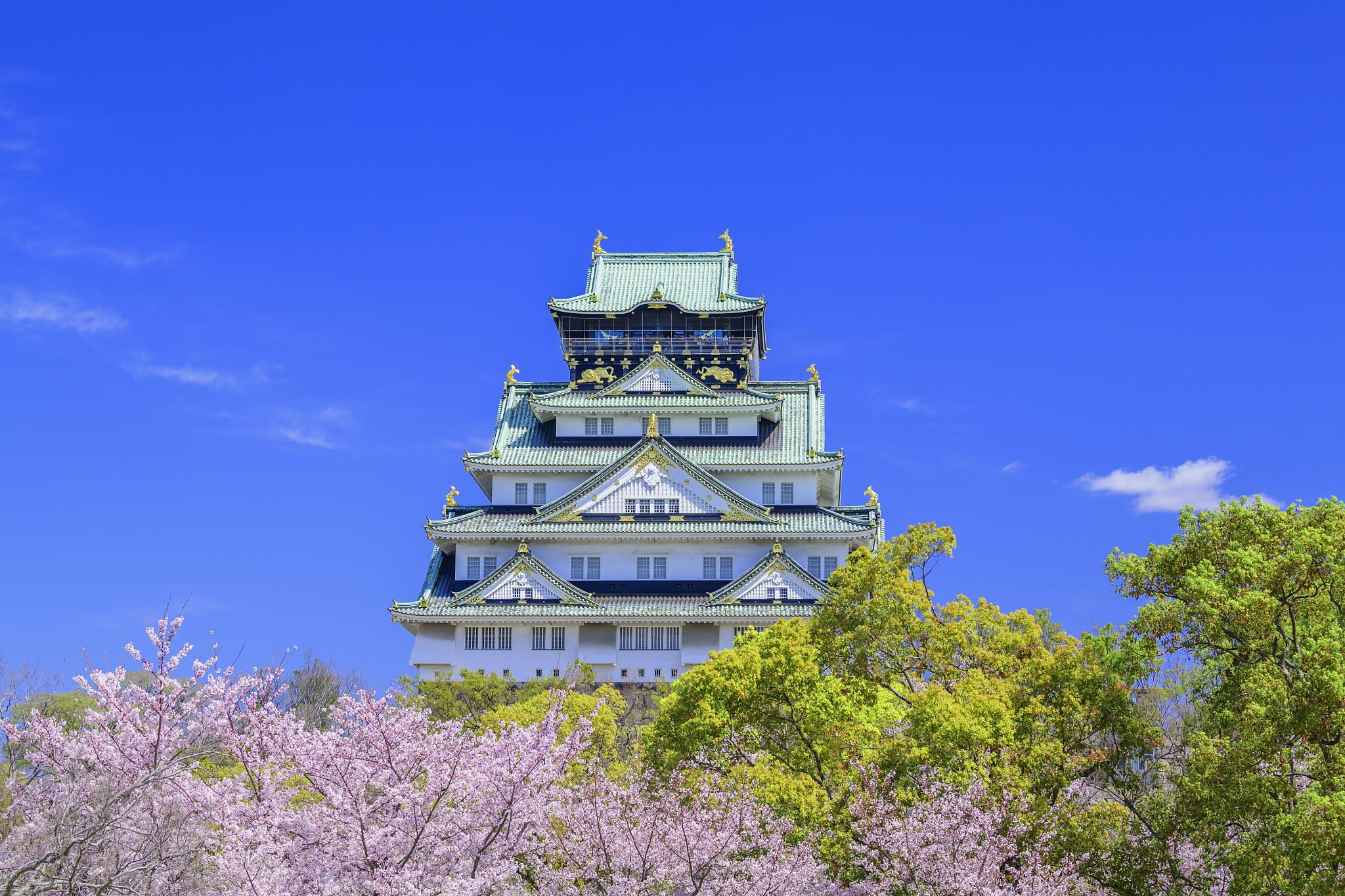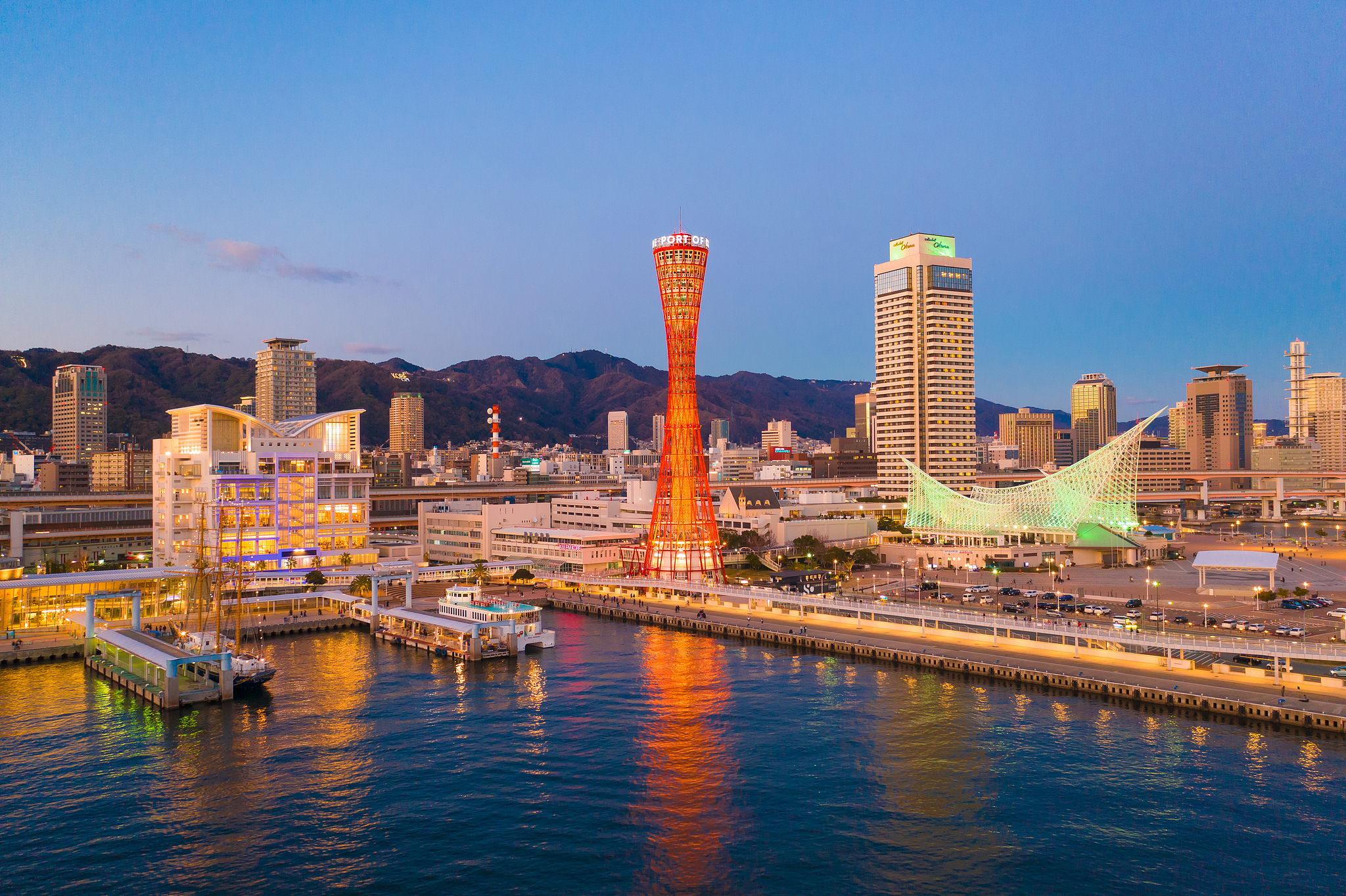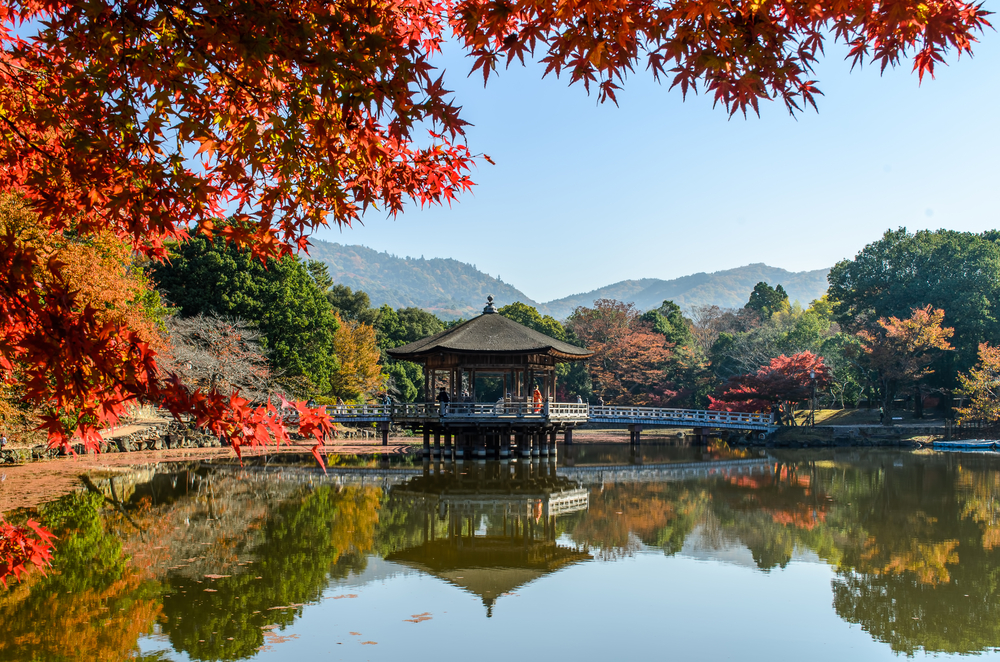https://bh.trip.com/moments/destination-kyoto-430/
App
Customer Support
Find Bookings
2025 Kyoto Travel Guide: Must-see attractions, popular food, hotels, transportation routes (updated in July)
Kyoto 오늘의 날씨
Mostly clear 26-40℃

Kyoto 인기 명소
Kyoto의 인기 Attraction
Kiyomizu-dera Temple
(726)Fushimi Inari Taisha
(545)Arashiyama
(522)Kinkaku-ji
(400)Sannenzaka & Ninenzaka
(306)Gion
(239)Yasaka Shrine
(224)Arashiyama Bamboo Forest
(151)Kamo River
(143)Nishiki Market
(141)Togetsukyo Bridge
(130)Nijō Castle
(128)Hanamikoji-dori
(122)Kifune Shrine
(122)Arashiyama Sagano Romantic Train
(92)Sanzen-in
(92)Kyoto Tower
(74)Rurikō-in Temple
(72)Kyoto Railway Museum
(34)Saihō-ji (Koke-dera) Temple
(18)All Trip Moments about Kyoto
Kyoto
#asiabudgetchallenge Fushimi Inari Taisha 68 Fukakusa Yabunouchicho, Fushimi Ward, Kyoto, 612-0882, Japan An interesting historical monument with a long history of 1300 years. This place is absolutely not to be missed and is open 24 hours. Every step takes you deep into nature, enjoying the magnificent scenery of Kyoto. The bright red gates create a striking contrast with the surrounding greenery, leaving one in awe. The hike to the top is definitely worth it! It's a magical and timeless place. Walking among the thousands of red torii gates is an unforgettable experience! 👍👍👍👍👍KellyBibb7Nanzenji Temple in Kyoto: A gathering place for the secluded Zen valleys of Japan
Nestled at the foot of Kyoto's Higashiyama Mountains, Nanzen-ji Temple, nestled between mountains and water, embraces tranquil nature and a serene Zen atmosphere, a sacred sanctuary for Zen meditation. Built by imperial decree during the Kamakura period, this Zen temple was originally Emperor Kameyama's villa, the "Zenrin-ji-den," a place for spiritual and spiritual retreat. With Emperor Kameyama's abdication in 1289, he ascended to the throne as a Buddhist monk and became the Religious Emperor. This transformation of the former private domain into a public religious space marked the beginning of Nanzen-ji Temple's status as a major center for Zen meditation. Later, Nanzen-ji Temple's position among the "Five Mountains of Kyoto" symbolizes its lofty position in Kyoto's Zen studies, architecture, and culture. The historical evolution of Nanzen-ji Temple not only profoundly reflects the intertwined relationship between Buddhism and imperial power, but also symbolizes the beginning of the destiny of the Nanzen-ji school of Rinzai Buddhism. A significant figure in Japanese cultural history, this temple has inspired diverse art forms, including poetry, painting, and the tea ceremony, infusing numerous cultural traditions with Zen-inspired teachings. Its monks also dabbled in academic and political fields, demonstrating the rich energy and profound depth of monastic culture. Entering Nanchan Temple for the first time is like stepping into a tranquil Zen valley. Its architecture embodies the charm of the Song Dynasty in the Central Plains. Its techniques are expressive, yet both solemn and elegant, blending harmoniously with the natural surroundings, imbued with a strong royal atmosphere. The temples stand majestically, their dignity radiating from an ancient elegance, weaving together the splendor of nature with the tranquility of Zen. Traveling deeper into the temple grounds along the stone path, the towering three gates suddenly come into view. Their serene grandeur is breathtaking, evoking a king reclusive in the woods, quietly observing the world, unspoken and dignified. The entire space is enveloped in a tranquil and peaceful atmosphere, a sense of time gone by, a serene stillness, a world apart from the hustle and bustle of the world. This state of mind is revered yet unassuming, imbued with a calm and solemn aura. The main hall within the temple is solemn and majestic, its aura calm and unassuming. The garden's ingenious layout showcases the elegant beauty of dry landscapes, conveying the profound Zen spirit of "unspoken teaching." It's not only a place for spiritual practice, but also an ideal place to slow down and reconnect with the mind. Whether devoutly praying or simply relaxing, one can experience the fusion of Zen and nature, reaching a deep sense of clarity and tranquility. #Japanese Rinzai Zen #Hojo Garden #Dry Landscapes #Buddhist Art #Zen #Spiritual Healing Spots #Buddhist Architectural Aesthetics #Spatial Art悦冬32 days in Kyoto no more than $100 per person.
#100usdchallenge Live in Kyoto, visit the main attractions of the city and spend only $100 in two days!? below I will tell you how. 🚩 Sightseeing Route Day 1: - Kyoto station - check in to the hostel - Imperial Palace - Kinkaku-ji - Arashiyama Day 2: - Nishiki Market - Ginkaku-ji - Philosopher's Path - Ninenzaka - Kiyomizu-dera - Gion 💴 Spending: - 🏠 Accommodation - $20 per/night (Kyoto guesthouse HIVE) - 🚇 Transportation - Subway & Bus 1-day Pass - $7,5 per/day 🍜 Local Cuisine: - breakfast in combini - $5 - lunch at a cafe - $8 - dinner - $10 📝Entrance tickets: - Imperial Palace - free - Kinkaku-ji - $3 - Arashiyama - free - Nishiki Market - pay for food - $10 - Ginkaku-ji - $3 - Philosopher's Path - free - Ninenzaka - free - Kiyomizu-dera - $3 - Gion - free 💡 Tips: There are many beautiful places in Kyoto that do not require an entrance fee, take this into account and you will spend much less if this is your goal. #budgettravel #kyoto #kyototripTourmen4Walden Woods Kyoto
#Let's talk about traveling Walden Woods Kyoto, a minimalist cafe located in a fairly hidden corner 😂 Here, they roast their own coffee and serve homemade pastries ☕️ The concept is "one cup of our coffee is enough!" Just one cup of coffee is enough! Because they are meticulous in selecting and roasting coffee, using a Vintage Purobatto machine that was built in the 1960s. When you drink coffee here, you'll feel as comfortable as if you were in the forest (or so they say). 📍Walden Woods Kyoto 508-1 sakai-machi shimogyou-ku Kyoto city 〒600-8194 (on hanayacho-street to the west of tominokouji street) 🚈 Walk from Gojo Station, Subway Karasuma Line Exit 5, 6 minutes ☎️ 075-344-9009 🕘 Opening hours 8:00-19:00Mom pls4📅 Itinera
📅 Itinerary Day1:osaka tour Day2: kobe tour Day3: nara and kyoto tour 🏨 Accommodation osaka namba 🍴 Food Recommendations kobe beef from kobe steakland 📌 Tips enjoy japan. dont stop exploring japan.💰Average Price per Person: 6 person ¥65000 9 person ¥95000dave costan3Wakayama Cat Train Must-Visit
Japan Travel✈️ Almost forgot to share this super niche Kansai itinerary! 🤔 This one's for those who love off-the-beaten-path cultural experiences + food adventures, and might feel anxious about language barriers! 🚗Day 1: Departure - Osaka Direct flight from Shanghai to Kansai Airport (for those without direct flights, connecting flights can be arranged). To ease the stress for those less confident in language skills, we've arranged a Chinese-speaking driver for airport pickup! Check into hotels in Shinsaibashi area - this district has amazing hotels popping up constantly! From the Ritz-Carlton near Michelin-starred Kikunoi to the reasonably priced Hilton... Personally I prefer the all-black W Hotel! Located right on Shinsaibashi main street, just 10 minutes walk to Dotonbori - perfect for shopping and dining. 🚗Day 2: Osaka - Wakayama Don't miss the themed train experience here! The train cars feature adorable cat-themed paintings and decorations - even the stationmaster is a cat! The 30-minute ride offers views of Japanese countryside shrines and pastoral landscapes, giving strong "Kikujiro's Summer" vibes! Right outside the station stands Wakayama's landmark - Wakayama Castle's main keep! Then board our private Chinese-speaking guide's vehicle to visit Kimiidera Temple, watch the tuna cutting show at the seafood market, and enjoy various Japanese BBQ. After feasting, head straight to a seaside ryokan with hot springs! 🚗Day 3-6: Koya-san - Nara - Kyoto For a deeper Koya-san experience, try temple lodging (shukubo)! This temple represents Japanese aesthetics + aristocratic lifestyle with high status - money can't necessarily buy this experience. Spend the day accompanied by morning bells, evening drums, and ancient Buddhist rituals - the ultimate travel recharge! Next day stop by Nara! For lunch I recommend a teahouse serving Yamato cuisine. Then proceed to Kyoto hotels. This time I chose Four Seasons Kyoto - opposite Kyoto National Museum, next to Myohoji Temple, across from Shin-Hie Shrine, and within walking distance to Kiyomizu-dera and Sannenzaka. Need I say more about why I picked this hotel? Kyoto is all about ancient temples and traditional/Michelin dining! My temple route: Nanzenji - Sanzenin - Kibune Shrine - Arashiyama. Kibune Shrine has special summer illuminations. Also try seasonal kawayuka dining on river platforms. Arashiyama offers boat rides, retro trains, hidden mountain Michelin vegetarian cuisine, and century-old wagashi making. Night walk to illuminated Yasaka Shrine for digestion! 🚗Day 7-8: Uji - Osaka Compact Uji can be explored in half a day - the golden Phoenix Hall at Byodoin, Uji River, vermilion torii gates, and irresistible matcha dessert street... Experiencing authentic Japanese culture without expensive tickets is my ideal travel scenario. Since Japanese summers get hot, we planned evening visits to Osaka Expo sites - besides daytime attractions, you get spectacular light shows and drone performances! Next day, with return flight at 17:45, there's still time for Shinsaibashi/Dotonbori/Umeda shopping!Benjamin80 Adams_3Kyoto One-Day Perfect Travel Itinerary
Starting with Arashiyama, followed by Kinkaku-ji, Kiyomizu-dera, and Fushimi Inari, this Kyoto Bus Tour by U-Tour Bus allows you to comfortably visit these iconic landmarks all in one day! During the ride between spots, the guide provides detailed and friendly explanations about each destination, making the journey both educational and enjoyable. Although you travel by tour bus, you have free time to explore each destination on your own, which I found particularly appealing as it avoids the constraints of group travel. ♥ If you need help with restaurant reservations or adding your name to a waiting list, the guide takes care of it for you, ensuring a hassle-free and convenient experience. Thanks to this Kyoto Bus Tour, I was able to fully enjoy my trip without any inconvenience. Next time I visit Osaka, I’ll definitely say yes to another bus tour! The weather was perfect too, making it an ideal day! >_< 📍Kyoto - Arashiyama, Kinkaku-ji, Kiyomizu-dera, Fushimi Inari응쥬3Comfortable Experience
This time, I stayed at Hiyori Stay Kamogawa, located near Shichijo Bridge, just a 14-minute walk from Kyoto Station. The Japanese-style apartment features a kitchen and offers stunning night views from the scenic rooms. The light Japanese-style breakfast is rich and perfect for families or long-term stays. It’s a 15-minute bus ride to Kiyomizu Temple, and you can enjoy a stroll along the Kamogawa River to admire cherry blossoms or relax on the summer terraces. Nearby attractions include Kyoto Tower and Sanjusangendo. In the evening, the Kamogawa River promenade is ideal for a walk, surrounded by bustling streets and street artists. Additionally, you can try the summer terrace restaurants, enjoying the cool Kamogawa breeze and Japanese kaiseki cuisine, adding a touch of summer charm. The apartment-style rooms are approximately 40 square meters, including standard suites (for 4 people), Kamogawa view rooms, and tatami rooms. The design blends Japanese aesthetics with modern minimalism, featuring wooden floors, light-colored fabrics, and bamboo decorations for a cozy ambiance. Each room is equipped with a full kitchen, including a refrigerator, microwave, ceramic stove, rice cooker, cookware, and tableware, making it suitable for family cooking or sukiyaki. Ingredients can be purchased at Nishiki Market. Some room types support accessibility features and wheelchairs, with elevators covering the entire building. Nearby dining options include Kamogawa summer terrace restaurants like Kibune Kiraku, Kyoto cuisine, outdoor dining, Unagi rice from Maruya Main Store, and the famous ramen from Tenkaippin, catering to diverse tastes.小土豆行旅3Kyoto | Chion-in Temple, the headquarters of the Pure Land Buddhism sect, an ancient Buddhist temple with rich cultural heritage
#JulyGoodPlace2025 ✓Chion-in Temple A famous historic site in the suburbs of Kyoto, it is the head temple of the Chinseibatsu sect of the Pure Land Buddhism in Japan, and has one of the two largest wooden gates in Japan. Chion-in Temple is an ancient Buddhist temple located in Higashiyama District. It was founded in the 14th century and is one of the famous tourist attractions in Kyoto. The most famous attraction is a giant 24-meter-high Nirvana statue made of golden wood carvings, which is one of the largest wooden Buddha statues in Japan. Chion-in Temple has many buildings and cultural heritages, such as Tangetsu-an, Kazeza, and Jyoujido, all of which are full of ancient Japanese cultural atmosphere; in addition to the attractions, Chion-in Temple also has a Japanese-style garden, which has different beauty in different seasons.Moutain4Kyoto | CITIC Art Museum, a showcase of contemporary architectural aesthetics.
✓ CITIC Art Museum Located just a few steps away from the Old Main Building of the Kyoto Prefectural Office, there stands a striking yellow building with a unique design that embodies contemporary aesthetics. This private art museum primarily exhibits the art collection of Kyoto Central Credit Bank. Although admission is free, the museum does not have permanent exhibitions and is only open during special exhibitions. It is recommended to check the official website for current exhibitions before visiting to avoid disappointment. The museum space is relatively small, with three exhibition halls on both the first and second floors. The compact layout creates a serene atmosphere for the exhibitions, allowing each artwork to quietly emerge. It is a beautiful and tranquil museum.Moutain4The shocking suspension of ancient architectural craftsmanship
#7月發文留言活动2025 Kiyomizudera Temple is one of the oldest temples. It was founded in 778. It was built by Nobujin Shonin on the orders of the monks of Todaiji Temple in Nara. It was later expanded by Sakanoue Tamuramaro to enshrine the Eleven-faced Thousand-armed Avalokitesvara. The main hall and Kiyomizu stage rebuilt in 1633 became what they are today and were listed as a World Cultural Heritage in 1994. The name of the temple comes from the Otowa Falls (音羽の泷), whose clear springs never stop all year round, symbolizing purification and blessing. Most visitors pray for health, academic success and marriage. It attracts about 5.5 million tourists every year and is the core of tourism. • Transportation: Bus (most recommended): Take city bus No. 100 or 206 from Kyoto Station (about 15 minutes, ¥230) to "Gojozaka" or "Kiyomizu-michi" station, and walk 8-10 minutes uphill to the entrance. The bus runs frequently (every 10 minutes). Keihan Railway: Walk about 20 minutes from "Kiyomizu Gojo Station", or take a bus to Gojozaka (about ¥230). Kiyomizu Temple is located in Higashiyama District, close to Yasaka Shrine (10 minutes walk), Ninenzaka/Sannenzaka (5 minutes walk), Kodaiji Temple (10 minutes walk) and Gion Hanami-koji (15 minutes walk), suitable for half-day or full-day tours. You need to climb Gojozaka or Kiyomizuzaka (about 200-300 meters, medium slope), it is recommended to wear sneakers or flat shoes, those with limited mobility can take a taxi to the entrance (but there is no direct access to the temple gate). Kiyomizu Temple covers a large area and includes many cultural assets and landscapes. The following is an introduction in order of visit: • Niomon The vermilion gate at the entrance, built in the 15th century, is magnificent, and is guarded by Kongo Rikishi statues on both sides. The stone steps in front of the gate are a popular photo spot, and there are often tourists in kimonos in the background. • West Gate and Bell Tower The West Gate (red wooden door) and the quaint bell tower behind Niomon are suitable for photographing the traditional temple atmosphere. • Three-story Pagoda The tallest three-story pagoda in Japan (31 meters), rebuilt in 1632, enshrines Mahavairocana, with a bright red exterior and exquisite murals inside (not often open). • Kiyomizu Stage The suspended wooden platform in front of the main hall is 13 meters high and supported by 139 beech pillars without a single nail, showing the ancient architectural craftsmanship. Stand on the stage and overlook Kyoto, and feel the shock of being suspended in the air. Address: 1-294 Kiyomizu, Higashiyama District, Kyoto City, Kyoto Prefecture, located halfway up Mt. Otowa, overlooking the eastern part of Kyoto.小土豆行旅3Full trip itinerary in Osaka
📍 Itinerary Overview A 3-day escape to Osaka that mixed lively street food scenes with peaceful nature trails — plus a full day of thrills at Universal Studios Japan. From the iconic Kuromon Market to a tranquil hike at Minoo Park, Osaka truly has it all. 🚩 Sightseeing Route Day 1: Arrived in Osaka → Lunch at Kuromon Market → Dotonbori night walk Day 2: Morning trip to Minoo Park → Afternoon café by the waterfall → Back to Namba Day 3: All-day adventure at Universal Studios Japan → Dinner near the hotel 🏖️ Must-Visit Attractions • Minoo Park Waterfall: Just 30 minutes from the city, this peaceful nature trail leads to a stunning waterfall. Especially beautiful in autumn. Don’t miss the deep-fried maple leaves! • Kuromon Ichiba Market: A must for seafood lovers. Grilled otoro (fatty tuna) and scallops are juicy and cooked to perfection. • Universal Studios Japan: A full day of fun for all ages. The Wizarding World of Harry Potter, Minion Park, and thrill rides make it an unforgettable experience. 🚇 Transportation Super convenient with Osaka’s extensive subway and train system. Use the ICOCA card for fast access. Minoo Park via Hankyu Line, and USJ via JR Yumesaki Line. 📷 Photo Spots • The waterfall at Minoo Park in fall • Kuromon Market’s vibrant food stalls • Neon lights at Dotonbori • Hogwarts Castle at USJ — magical both day and night! 🍜 Local Cuisine • Grilled Otoro & scallops at Kuromon Market • Takoyaki and okonomiyaki from street vendors • Café drinks and sweets near Minoo Park • Themed snacks and butterbeer at USJ 🏠 Accommodation Stayed at Hotel The Rock near Namba Station — a stylish and cozy hotel in a perfect location. Easy access to Kuromon Market, Dotonbori, and direct train routes to USJ and Minoo Park. #osaka #universaljapan #minohwaterfallosaka #travel #เที่ยวโอซาก้าเพราะหมี7Kyoto | Johoji Temple Rokkakudo, a Buddhist temple in a neighborhood surrounded by high-rise buildings
#JulyGoodPlace2025 ✓Rokkakudo Rokkakudo, full name "Shiunzun Mountain Dharma Temple", is a historic Tendai sect temple with a history of more than a thousand years. It is named after the hexagonal building of the main hall. It is one of the famous ancient temples in Kyoto. The special thing about Rokkakudo is that it is surrounded by office buildings on all sides. It is quite difficult to capture the Rokkakudo in the photo. The best location is to see the entire building of Starbucks in front through the glass floor-to-ceiling windows. In addition, Rokkakudo is also the birthplace of "Ikebana Kado" and is revered as the birthplace of Kado. The headquarters of Ikebana is located here. The temple has Ikebana Hall and flower arrangement exhibitions, which inherit the beauty of traditional Japanese art.Moutain4Kyoto | Seiryo-in Monzeki, a hidden gem for autumn foliage in Higashiyama.
✓ Seiryo-in Monzeki One of the three major temples of the Tendai sect in Japan and the head temple of Sanzen-in Myoho-in. It is said that Seiryo-in was designed and constructed by the famous tea master of the Edo period, Kobori Enshu. The temple features a strolling garden centered around a pond at the foot of Kuroda Mountain, embodying the wabi-sabi aesthetics of Sen no Rikyu and the elegant aura of samurai nobility. Seiryo-in is renowned for its beautiful Japanese gardens, including the Ryushin Pond, Koryu Bridge, and Senshin Waterfall, all designed by the Muromachi period painter Soami. Each season offers a unique landscape. The temple enshrines the principal deity "Shijoko Nyorai" and is famous for its blue Fudo Myo-o statue, a national treasure and an important cultural asset of Japanese Buddhist art.Moutain4Kyoto | Hojo Garden, a scenic garden facing the Hojo of Chion-in Temple.
✓ Chion-in Hojo Garden The Hojo Garden of Chion-in Temple is a nationally designated scenic spot. Designed in the early Edo period by the monk Gyoku-en, the garden features a pond-centered strolling style. Within the garden, you'll find the Shinji Pond, Aoi-an, and Tokugawa Gongen Hall. The charm of the Hojo Garden lies in its harmonious space and beautiful composition. In the karesansui (dry landscape) area, white sand and stones symbolically represent mountains and water, creating a serene aesthetic that abstracts natural scenery to its utmost. In the pond garden, natural landscapes unfold around the pond, with seasonal flowers, plants, and trees adding vibrant colors to the surroundings.Moutain5Kyoto | Yuzenen, a landscape garden commemorating the 300th anniversary of the birth of the founder of Yuzen dyeing
#7月好去地方2025 ✓Yuzen-en The residence of Miyazaki Yuzen next to Chion-in Temple is said to be the founder of Yuzen dyeing and a master of fan painting and kimono design during the Genroku period. Yuzen-en is a garden renovated to commemorate the 300th anniversary of Miyazaki Yuzen's birth. It is a famous garden in the Showa era. There is a garden that draws water from the Higashiyama spring and a dry landscape garden, accompanied by a teahouse, which is very quiet and atmospheric. The entrance fee to Yuzen-en is ¥300 yen, and it is more cost-effective to buy a package ticket for the Hojo Garden of Chion-in Temple, which is ¥500 yen. It will be more beautiful to come to Yuzen-en in autumn, with distinct layers of five-color maple red, which is quite gorgeous.Moutain4Kyoto | Yasaka Shrine
✓ Yasaka Shrine Located next to the bustling Gion district, Yasaka Shrine is a striking Japanese shrine with vivid vermilion hues. It spans a vast area and connects to Maruyama Park. As the head shrine of over 2,000 Yasaka Shrines across Japan, it serves as the venue for Kyoto's famous "Gion Matsuri," one of Japan's three major festivals. With a history of over a thousand years, the shrine hosts various Shinto rituals and festival activities every July, aiming to ward off diseases and disasters. Yasaka Shrine, regarded as one of Kyoto's guardian shrines, boasts a history of over a millennium. Its vibrant red tower gate and elegant main hall showcase the beauty of traditional Japanese shrine architecture. A unique feature of the shrine is its "beauty water," which is believed to bless those who drink or wash their face with it, promoting healthy skin and well-being. This has made it a favorite among worshippers.Moutain4Maruyama Park, a tranquil space for enjoying nature and cherry blossoms in the city center.
✓ Maruyama Park Located in Kyoto's Higashiyama district, Maruyama Park is one of the oldest parks in the area. Adjacent to Yasaka Shrine and Chion-in Temple, it serves as a green oasis in the urban landscape, blending traditional Japanese garden elements with natural scenery. The park features ponds, small bridges, stone lanterns, and winding paths, showcasing the elegant charm of Higashiyama. The park spans a large area and is densely planted with cherry trees, making it especially famous for its spring cherry blossom views. The most notable attraction is the Gion weeping cherry tree, which boasts a magnificent shape and becomes even more enchanting when illuminated at night, making it a popular spot for cherry blossom viewing in Kyoto. In addition to enjoying flowers and nature, the park also houses tea houses, restaurants, and a small stage where traditional performances are often held, creating a lively atmosphere.Moutain4Kyoto | neuf creperie - An Elegant French Crepe Specialty Shop
✓neuf creperie Neuf Creperie Gosho Minami Branch (NEUF CRÊPERIE. Gosho Minami Branch) Didn't I just finish eating curry? But thanks to the recommendation of the barista at Kurasu, I ended up walking into the elegant French crepe shop across the street, neuf creperie. Everything here exudes elegance, until I told the owner that the coffee shop across the street recommended me to come here because no one was coming in. Upon hearing this, she couldn't hold back her laughter and burst out laughing! The owner recommended an Italian-style crepe, and I was shocked when it was served—the portion was huge, and it even came with a salad! The crepe's skin looked moist but was actually thin and crispy, topped with mozzarella cheese, tomato meat sauce, parsley, and a sunny-side-up egg. It was truly a savory crepe with exceptional flavor and texture.Moutain4Kyoto | Soramitei, ranked 16th among Japan's top tonkatsu restaurants.
✓ Soramitei This is a place I had reserved in advance. Ranked 16th among Japan's top tonkatsu restaurants and also recommended by Michelin, it's truly impressive. Without a reservation, it's almost impossible to get a seat! I ordered the Chiba Prefecture's 'Hayashi SPF Aged Pork' loin and tenderloin combo. This is a high-grade variety, and just looking at the perfectly fried, tender pink color, you can tell it's going to be delicious! Thick-cut, fresh, and sweet, it almost melts in your mouth—such a delightful taste! The entire set meal is very satisfying and highly recommended.Moutain4Kyoto | ShinPuhKan: Shopping and Flower Viewing in the Bustling City Center
Who would have thought that in the lively heart of Kyoto, you could shop and take photos with a stunning hydrangea garden at the same time? This unique experience is likely only possible at the ShinPuhKan complex shopping center. Located near Karasuma Oike Station on the subway, ShinPuhKan is a building that blends retro charm with modern sophistication. It combines a shopping mall with curated stores, restaurants, and a hotel, while featuring a beautiful open-air garden in its courtyard. This makes the entire space incredibly photogenic, especially during May and June when the hydrangeas are in full bloom. Add a touch of light rain and the warm glow of ambient lighting, and the atmosphere becomes even more enchanting.Moutain6✨ Good accommodation, cheap price, location near Namba! Osaka, KYOTO🇯🇵
รีวิวที่พัก 3U NAMBA-MINAMI by DOYANEN – โอซาก้า 🇬🇧EN version is available below👇 📍ที่ตั้ง: ใกล้สถานี Nankai Namba / Shin-Imamiya เดินทางสะดวกมาก 🛏 ห้องพัก: ห้องแบบมินิมอล สะอาด เรียบร้อย มีอุปกรณ์พื้นฐานครบ ทั้งเตียงใหญ่ โต๊ะทำงาน เครื่องปรับอากาศ ผ้าขนหนู ผ้าปู และตู้เย็น 🚿 ห้องน้ำ: แยกชายหญิงตามชั้น (ชั้นหญิง/ชายสลับกัน) 🛁 ห้องอาบน้ำ: อยู่ชั้น 1 สะอาดมาก มีไดร์เป่าผม สบู่ แชมพูพร้อม 🍽 Common Area: มีมุมนั่งเล่นครัวเล็ก ๆ ชั้นล่าง พร้อมไมโครเวฟ ตู้เย็น โต๊ะกินข้าว เครื่องซักผ้าฟรี 🔒 ความปลอดภัย: ตอน Check in จะได้รับรหัสเฉพาะของแต่ละห้อง ใช้สำหรับเข้าห้องพัก ห้องน้ำรวม และประตูโรงแรม รู้สึกปลอดภัย 💸 ราคา: คุ้มมาก ถ้ามาเที่ยวแบบ Budget หรือ Solo Trip 🌟 จุดเด่น: • พนักงานสื่อสารอังกฤษได้ดีและช่วยเหลือดี (ตอนไปมีพนักงานที่พูดภาษาไทยได้ด้วย) • มีร้านสะดวกซื้อใกล้ ๆ • เดินไปตลาดคุโรมง, Dotonbori, Namba Parks ได้เลย 📌 Tips: • แนะนำให้เลือกห้องแบบ Private หากมาเป็นกลุ่ม • ห้องน้ำรวมสะอาดจริง ไม่ต้องห่วง 📷 ปักหมุดไว้เป็นตัวเลือกดี ๆ สำหรับใครที่อยากประหยัดแต่พักสบาย เดินทางสะดวกในย่านฮิต โอซาก้า! 👉 ติดตาม #tripmoments อื่นๆ ของเราได้ที่หน้าโปรไฟล์ มีอีกหลายที่เด็ดๆ รอให้คุณไปตามรอย! ━━━━━━━━━━━━━━━━━━ 🇬🇧 English Version 🇬🇧 ━━━━━━━━━━━━━━━━━━ 3U NAMBA-MINAMI by DOYANEN – Budget Stay in Osaka 📍 Location: Very close to Nankai Namba & Shin-Imamiya Station – super convenient 🛏 Room: Clean, minimal, with essentials like big bed, desk, AC, towels, and fridge 🚿 Bathroom: Gender-separated by floor, shared but very clean 🛁 Shower: On 1st floor with hairdryer, soap, shampoo 🍽 Common Area: Kitchen corner, microwave, dining table, free laundry 🔐 Security: Private code to enter building, bathroom, and room – very safe 💸 Price: Great value for solo or budget travelers 🌟 Why We Love It: – English-speaking staff (we even met Thai-speaking staff!) – Walkable to Kuromon Market, Dotonbori, Namba Parks – 7-Eleven nearby 📌 Tips: – Choose a private room if you’re traveling in a group – Shared bathrooms are spotless 📷 A great pick if you’re looking for comfort, safety, and access to Osaka’s best spots without breaking the bank! 👉 Explore more #TripMoments and hidden gems on our profile – Japan has so much to offer! #3UNambaMinami #โอซาก้าที่พักดี #ที่พักโอซาก้า #เที่ยวญี่ปุ่น #japan #TripMoment #JapanTrip #BackpackerFriendly #BudgetHotelJapan #เที่ยวโอซาก้า #solotripJoy of Journeying11Kyoto | Japanese Cuisine Exhibition: The Wisdom of Japanese Nature and People
#7月好去地方2025 Starting from the National Museum of Nature and Science in Tokyo, the popular special exhibition "Japanese Food --- The Wisdom of Japanese Nature and People" that has been touring all over Japan finally came to the Kyoto Museum. I happened to be in Kyoto, so of course I couldn't miss this educational and entertaining exhibition. Although I don't understand Japanese, I can get a glimpse of the power of Japanese food just by looking at the pictures and models. The exhibition is quite interesting from various perspectives such as science and history, as well as various specimens and materials. Just water quality and radish, there are so many varieties produced in Japan alone, no wonder Japanese pickles are so famous! I also saw the evolution of daily Japanese food, and it also incorporated foreign Western food, sashimi, Oyakodon, eel rice, sushi, tempura, etc. The whole tour really made me more and more hungry! The special exhibition of the Kyoto Museum is on the third and fourth floors, the permanent exhibition is on the second floor, and there is also a cafe on the first floor, which has a pretty nice dining atmosphere.Moutain5Kurasu Ebisugawa: A Stylish Coffee Shop in Kyoto's Alleyways
✓Kurasu Ebisugawa Located in the alleys of Marutamachi, this stylish coffee shop features an open workspace that doubles as a bar counter. Guests can enjoy watching the baristas craft their specialty drinks, creating a relaxed and comfortable atmosphere that seems to attract a younger crowd. I ordered the sweet matcha latte, which was impressively well-made. While there, I happened to notice the shop across the street. Isn't that the French crepe place recommended by Linlin, the owner? Curious, I asked the female barista if the shop was popular. (When it comes to French crepes, it's best to ask a woman for her opinion!) The barista immediately replied, "Yes, it's very popular! There's usually a long line. But hey, why isn't there a line today? Hurry up and finish your drink so you can go try it!" (After I finished eating, she came out to ask me how it was and we exchanged tips on exploring local spots. She mentioned that the curry place nearby is her favorite.)Moutain4Kyoto | Kan'in Palace Ruins, the residence of the imperial family during the Edo period
#July Good Places 2025 ✓ Kanin Palace Ruins The historic building in the southwest corner of Kyoto Imperial Garden was once the residence of the "Kanin Palace" of the Edo period. Now only some of the ruins remain. It was opened to the public for free in 2006. The original residence complex was magnificent, with facilities such as academies, gardens, and tea rooms, which was a typical aristocratic residential style. Today, some academy buildings and gardens are preserved, and photos, pictures and exhibits about the history of Kyoto Imperial Garden are stored indoors, as well as a small garden and lounge. The outdoor garden is beautifully landscaped, and seasonal plants such as plum blossoms, cherry blossoms, maple trees, etc. are planted in the garden. The environment is quiet and elegant, full of the atmosphere of the ancient capital.Moutain4Kyoto | Kyoto Prefectural Government Building - Old Main Building, Renaissance-style Western-style building
#7月好去地方2025 ✓Kyoto Prefectural Government Office-Old Main Building The oldest existing government building in Japan, built in Meiji 37, is a Renaissance-style Western-style building. Its distinctive features are the regular design of the facade and the left-right symmetry. There is a weeping cherry tree in the atrium, which is as magnificent and beautiful as a picture when it blooms. It is said that this garden was created by the seventh generation master Ogawa Jibei, and it is a unique work that combines Japanese and Western styles. Although the old government office has been listed as a national cultural property, it is still used as a government agency, so there are many public officials coming in and out. There is also a retro restaurant on the first floor, and the dining environment is very atmospheric and antique.Moutain4Katsuo-ji – The Daruma Temple of Victory in Osaka
If you're visiting Osaka and wish for success in work, studies, health, or love, Katsuo-ji Temple is a must-visit. This ancient temple, surrounded by mountains, is believed by the Japanese to grant blessings of "victory" in various aspects of life. 🍀 🌿 What makes this place unique Thousands of Daruma dolls are scattered throughout the temple! From the stairs and pavilions to the pondside, these dolls symbolize prayers and hope. Those who have their wishes fulfilled often return their Daruma to the temple, writing words of gratitude on them. ❤️ 📸 Stunning photo spots: • The red bridge over the pond • Stone steps amidst lush greenery • The "Daruma wall" filled with eyes of hope 🕰️ Best times to visit: During autumn (November) for vibrant foliage and spring (April) for blooming flowers and pleasant weather. 🚃 How to get there: Take a train from Umeda Station to Mino-o Station, then a bus for about 20 minutes. 💡 Tips: • Don’t forget to buy a Daruma doll, make your wish, and return it to the temple once your wish comes true. • There’s a small, cozy café within the temple grounds, perfect for enjoying a light green tea break. 🎯 If you’re looking for a serene, meaningful place to make a wish, Katsuo-ji is a hidden gem you shouldn’t miss. Close to the city yet immersed in nature, it’s a spot that offers both tranquility and inspiration. 🙏✨Joy of Journeying3WONDERFUL 5 DAYS HOLIDAY IN KYOTO.
Kyoto (/ki.ˈoʊ.toʊ/[3] or /ˈkjoʊ.toʊ/;[4] Japanese: 京都, Kyōto [kʲoꜜː.to], officially Kyoto City (京都市, Kyōto-shi; [kʲoː.toꜜ.ɕi], is the capital city of Kyoto Prefecture in the Kansai region of Japan's largest and most populous island of Honshu. As of 2020, the city had a population of 1.46 million, making it the ninth-most populous city in Japan. More than half (56.8%) of Kyoto Prefecture's population resides in the city. The city is the cultural anchor of the substantially larger Greater Kyoto, a metropolitan statistical area (MSA) home to a census-estimated 3.8 million people. It is also part of the even larger Keihanshin metropolitan area, along with Osaka and Kobe.ASROY.ROY3

Popular Kyoto Topics

2025 Recommended Attractions in Kyoto (Updated July)
12100 posts

2025 Recommended Guides in Kyoto (Updated July)
10134 posts

2025 Recommended Restaurants in Kyoto (Updated July)
3871 posts

Destinations related to Kyoto

2025 Osaka Travel Guide: Must-see attractions, popular food, hotels, transportation routes (updated in July)
12769 posts

2025 Kobe Travel Guide: Must-see attractions, popular food, hotels, transportation routes (updated in July)
1998 posts

2025 Nara Travel Guide: Must-see attractions, popular food, hotels, transportation routes (updated in July)
1419 posts
- 1
- 2
- 3
- 4
- 100
Post
더 많은 추천 보기
Popular Trip Moments
Kyoto’s Charm: Where Culture, Nature, and History Collide | 🌸 Strolling Through Shichijo Bridge Under Wisteria Skies | Arashiyama Bamboo Grove – Kyoto📍 Destination: Kyoto, Japan💴 Budget: Free💡 | Kyoto: Arashiyama & Tenryu-ji Temple | The Wind Chime Festival, which brings cool color to Kiyomizu-dera Temple every midsummer, will be held again this year 🎐🏮👘✨ | A recommended donut shop for when you want to take a break🍩☕️ | My Two Vacation Homes in Kyoto | [Kyoto] Relax at Chiikawa Mogumogu Honpo Kyoto Fushimi Branch🍡✨ | Kyoto Area Extension and Gourmet Food Gion Festival Nara Shiga | A tranquil spot in Kyoto: Fufu-Kyoto | Kyoto | Kyoto | Daiwa Roynet Hotel Shijo Karasuma, convenient for staying in Shijo shopping district | Budget-Friendly Traditional Townhouse Stay in Kyoto | Mount Hiei | Fushimi Yoshikazuya Store🛍️ | 【Kyoto】A Photogenic Spot! Kyoto's Yamato Bridge | A Stroll Through Maruyama Park – Kyoto’s Peaceful Garden | ⛩️ Let’s Go to Fushimi – Kyoto’s Sake & Shrine Wonderland! 🍶 | Anti-War Journey: Best Photo Spots in Kansai | Kyoto Leisure Hotel | Grand Prince Hotel Kyoto | Yasaka Shrine: Kyoto’s Spiritual Gateway | Spice Enthusiasts Rejoice! Experience Authentic Spicy Indian Curry at "DANA PANI EN" | 【Japan・Kyoto】A Summer Tradition! Purify Your Mind and Body at Shimogamo Shrine's Mitarashi Festival | 【Japan・Kyoto】Enjoy ramen and chashu rice bowl at the popular riverside restaurant 'Rantan' along the Kamo River. | Kyoto City Attractions: Okazaki Shrine and Heian Shrine | Kyoto's Iconic Spot! Kiyomizu-dera Temple | Above the Clouds at Mount Hiei – Japan | [Kyoto] Sanjusangendo Temple | Charming Views at Mount Hiei Garden Museum – Japan | [Kyoto] Ninenzaka and Sannenzaka
Recommended Attractions at Popular Destinations
Popular Attractions in Bangkok | Popular Attractions in Manila | Popular Attractions in Tokyo | Popular Attractions in Taipei | Popular Attractions in Hong Kong | Popular Attractions in Seoul | Popular Attractions in Kuala Lumpur | Popular Attractions in Los Angeles | Popular Attractions in Shanghai | Popular Attractions in New York | Popular Attractions in Shenzhen | Popular Attractions in Osaka | Popular Attractions in Singapore | Popular Attractions in London | Popular Attractions in Guangzhou | Popular Attractions in San Francisco | Popular Attractions in Beijing | Popular Attractions in Macau | Popular Attractions in Bali | Popular Attractions in Jakarta | Popular Attractions in Paris | Popular Attractions in Ho Chi Minh City | Popular Attractions in Istanbul | Popular Attractions in Phuket | Popular Attractions in Chicago | Popular Attractions in Seattle | Popular Attractions in Toronto | Popular Attractions in Orlando | Popular Attractions in Cebu | Popular Attractions in Chiang Mai
Popular Restaurants in Kyoto
Okabeya | Moritaya - Kiyamachi | Hirokawa | Ogata | Owatari | Toufudokorotougaden | Mashita | Uosaburo | Kyoto Kaiseki Yakiniku (BBQ) HIRO Kyoto Station | Restaurant Yonemura Gion | GION SASAKI | Toriyasa | Soba no Mi Yoshimura | Gion Koishi | Kikunoi Honten | Nanzenji Junsei | Sushi Gion Matsudaya | Kyogoku Kaneyo | Mishima Tei Honten | Gion Uokeya U | Kikunoi Roan | Hisago | KYOTO KITCHO | HYOTEI | MENYA INOICHI | Yamamoto Menzou | Ichiran - Kyoto Kawaramachi | Oimatsu Arashiyama | Kodaiji Wakuden | YASAKA
Popular Ranked Lists
Top 50 Must-Visit Restaurants in Yangzhou | Top 10 Luxury Hotels near Grand Baie | Popular Luxury Hotels Near Fredericksburg | Top 50 Must-Visit Restaurants in Singapore | Top 50 Must-Visit Restaurants in Athens | Popular Trending Attractions in Chengdu | Popular Trending Attractions in Yokohama | Popular Trending Attractions in Guiyang | Top 10 Trending Attractions in Wuhan | Top 50 Luxury Hotels near Sankt Johann im Pongau | Top 20 Luxury Hotels near Lecci | Top 10 Luxury Hotels near Krapinske Toplice | Popular Trending Attractions in Tonglu | Top 50 Must-Visit Restaurants in Changsha | Top 20 Luxury Hotels near El Dorado County | Popular Trending Attractions in Lianyungang | Top 50 Must-Visit Restaurants in Dalat | Top 50 Luxury Hotels near Elounda | Top 10 Trending Attractions in Guangzhou | Top 50 Must-Visit Restaurants in Madrid | Top 50 Luxury Hotels near Portici | Top 10 Must-Visit Restaurants in Bad Ischl | Top 10 Luxury Hotels near Volarice | Popular Trending Attractions in Suzhou | Top 50 Luxury Hotels near Isparta | Top 20 Luxury Hotels near El Burgo de Osma | Popular Trending Attractions in Singapore | Top 50 Must-Visit Restaurants in Seoul | Top 50 Must-Visit Restaurants in Barcelona | Popular Trending Attractions in London
About
Payment Methods
Our Partners
Copyright © 2025 Trip.com Travel Singapore Pte. Ltd. All rights reserved
Site Operator: Trip.com Travel Singapore Pte. Ltd.
Site Operator: Trip.com Travel Singapore Pte. Ltd.